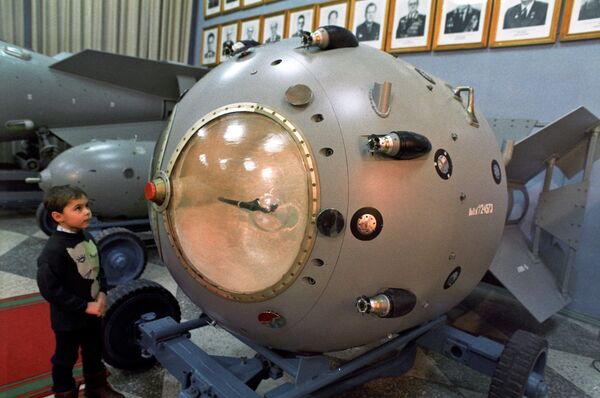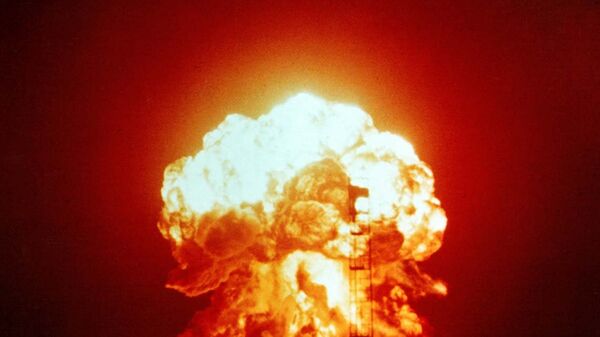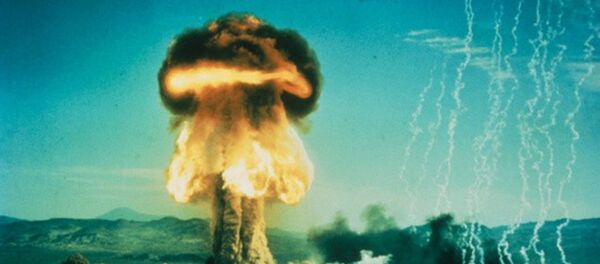On August 29, 1949, the USSR successfully tested its first nuclear bomb, which became a game changer in the decadeslong Cold War de facto announced in the 1946 Fulton speech of Winston Churchill and the famous Truman Doctrine of 1947.
By 1949 the United States had twice used new atomic weapons in Japan and seemingly didn't intend to rest on their accomplishments. Pentagon strategists, who started developing plans for a nuclear strike against the USSR shortly after the end of WWII, expected that the Soviet Union would create its first atomic weapons no earlier than 1955.
The Soviet nuclear test in Semipalatinsk caught US war planners by surprise eliminating Washington's nuclear monopoly and creating conditions for the USSR's peaceful development for the coming decades.
To date, Russia remains the US's only peer in the field of nuclear arms capabilities. According to Stockholm International Peace Research Institute (SIPRI) estimates, the US has 7,300 nuclear warheads, while Russia possesses 8,000 weapons of that type. For comparison's sake, the US's NATO allies Great Britain and France have 225 and 300 nuclear warheads, respectively.
However, in his February speech at the American Enterprise Institute (AEI), an influential conservative think tank, Senator Tom Cotton (R-AR) emphasized Russia's, "10-to-1 advantage over [the US] and our NATO allies in tactical nuclear warheads."
Air Force Gen. John Hyten, the commander of America's nuclear forces, voiced similar concerns in his testimony before the Senate Committee on Armed Services on April 4, 2017, calling for bolstering the US nuclear program.
The calls came amid a series of flight tests of America's modernized B61-12 bomb.
On August 29, 2017, the US National Nuclear Security Administration reported about successful flight tests of its B61-12 gravity bombs without a nuclear warhead.
The test has evoked strong memories of the nuclear arms race, Russian military analyst Oleg Glazunov told Sputnik, suggesting that the recent B61-12 test "means that the Americans are preparing for war."
In Russia, the idea to use nuclear energy was first voiced in 1910 by geochemist Vladimir Vernadsky, who founded the Radium Institute in Leningrad (Saint Petersburg) in 1922 to continue his scientific research.
Six years later Russian (Soviet) theoretical physicist Georgy Gamov discovered a theoretical explanation of alpha decay, while in 1937 Europe's first cyclotron was created in the Radium Institute with Igor Kurchatov who was later dubbed the "father of the Soviet atomic bomb" taking part in the works.

Since 1940 Kurchatov had been heading the Soviet nuclear weapons program. A year after the Nazi Germany invasion of the Soviet Union in 1941, the secret Laboratory No. 2 was established in Kazan University, and in 1943 the State Defense Committee announced the beginning of applied research in atomic energy.
By this time Soviet intelligence agents had already obtained information on the American nuclear project. A detailed scheme for the first US atomic bomb was received by Moscow specialists just two weeks after the United States had assembled it.
The intelligence collected on the American plutonium project helped Soviet scientists avoid mistakes and shorten the time taken for the creation of the first Soviet nuclear explosive.
Nevertheless, as prominent Russian physicist Zhores Alferov noted, had a remarkable team of qualified physicists not been present in the Soviet Union, no intelligence data could have helped solve the nuclear problem.
"The nuclear weapon was created in the USSR due to the fact that we had our own, national school of physicists in the 1920s-1930s," Alferov emphasized in January 2000.



